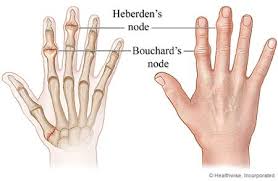Sulfur the less talk about Nutrient
Sulfur the less talk about Nutrient: How important it can be
It is amazing how good and important things can easily be forgotten about. We are costumed to forgetting or rather ignoring even things that are very essential to our good health and well-being. Before we get into the discussion of sulfur the less talk about nutrient, let me illustrate to us using tobacco smoking as one of those very harmful things to human health yet people are still very much into their usage. Despite the public awareness of the dangers of cigarette smoking and even the scary advert accompanying the packaging smokers are so much addicted to this harmful drug and smoke their life out of it. Now despite the knowledge we have about the importance of sulfur, this very important piece of nutrient is largely forgotten. I may not know what you are saying about this nutrient but the truth is that sulfur the less talk about nutrient is very essential. Sulfur is primarily responsible for the maintenance of health and even prevention of chronic illnesses such as Metabolic Syndrome. We (experts at AWAREmed Health and Wellness Resource Center) once stated that prevention is better than cure, does this sound important to you? I guess it is because of the financial burden it will offload off your back. Nonetheless what is worrying is that despite its importance it very shocking to note that a Minimum Daily Requirement (MDR) to avoid sulfur deficiency does not even exists even though this mineral is the eighth most common element by mass in the human body.
Sulfur the less talk about Nutrient: What makes nations with High Sulfur Intake to be very healthy?
Let us now look at the impact of sulfur in our societies and particularly in a wider perspective of nations. It has been established that some of the major world suppliers of sulfur like Greece, Italy and Japan enjoy some of the lowest rates of heart disease, obesity and increased longevity on the surface of the earth. And do you know why? Keep reading. For instance let us consider Icelanders remarkably low rates of depression, obesity, diabetes, and heart disease can possibly be attributed to the line of volcanoes that formed that island nation and whose eruptions periodically blanket the soil with sulfur containing volcanic rock.
Initially it was believed that the Icelandic diet was so protective against chronic illness due to a high intake of fish. Nonetheless this school of thought is still a subject of discussion. However, as for those Icelanders who migrated to Canada and continued with their habit of eating a lot of fish it was found out that they ceased from enjoying the same low rates of disease. Why? It appeared that the Icelandic soil which is unusually rich in sulfur may indeed play a pivotal role in the health and avoidance of sulfur deficiency of its residents. This is amazing indeed; it therefore explains why sulfur the less talk about nutrient should be re-looked into, if we want to be free from certain chronic complications.
Sulfur the less talk about Nutrient: Sulfur’s Critical Role in the Body
Sulphur is very essential to many of the body’s biological processes, and metabolism is inclusive. Remember that without adequate sulfur, glucose metabolism becomes defective and muscle and fat cells are damaged as the result of becoming glucose intolerant. This is how sulfur deficiency can lead to all manner of skeletal and muscle disorders with corresponding pain and inflammation.
This impaired glucose metabolism resulting from insufficient sulfur is also implicated as a factor in obesity and the dangerous condition known as Metabolic Syndrome because one way the body compensates for defective glucose metabolism is by gaining weight. Therefore when sulfur deficiency occurs within the context of a low fat diet, the problem becomes more severe allowing more sources of glucose present in a low fat diet in the form of carbohydrates to be converted into fat and even worse released into the bloodstream as triglycerides as fuel for the damaged and inflamed muscle cells.
Sulfur the less talk about Nutrient: Alzheimer’s disease and Sulfur Deficiency?
Experts while analyzing minerals present in the cells of the typical Alzheimer’s patient it was established that sulfur is almost nonexistent compared with a normal profile. Besides that some research findings has indicated that reversal of this deficiency state cannot only prevent or halt the progression of this horrible disease but even reverse it provided the patient is still in the early stages where little brain damage has occurred. This now leave many to wonder and probably you are too that could the skyrocketing cases of Alzheimer’s in recent years be related to the shunning of eggs, a very good source of sulfur, by older Americans and beyond?
Sulfur the less talk about Nutrient: Sulfur Helps Mobilize Vitamin D from the Sun
When unprotected skin is exposed to the sun, the skin synthesizes vitamin D3 sulfate. While vitamin D is normally considered fat soluble, vitamin D3 sulfate is a form of the vitamin that is actually water soluble. This allows this type of vitamin D to travel freely in the blood stream. On a side note, the vitamin D3 in supplements is not the same vitamin D3 as what you get from the sun and should not be considered an adequate substitute. And remember that when the skin is exposed to sunlight it will produce large amounts of cholesterol sulfate. The sun, then, has the potential to provide sulfur to the body in the form of vitamin D3 sulfate and cholesterol sulfate.
Sulfur the less talk about Nutrient: Make Sure You Get Enough to Avoid Sulfur Deficiency!
In conclusion doctor Akoury note that even though sulfur is basically ignored in nutritional circles, it is nonetheless a critical nutrient and one that is necessary for vibrant health and prevention of chronic health complications. She advises that despite sulfur nutrient being ignored, it is very essential and must never be insufficient in supply. Therefore the simplest way of obtaining sufficiency of sulfur is by getting frequent midday sunlight without the sunscreen. In doing this, it is important that the dose of sunlight must be friendly to the skin and with a non-burning effect.
Besides the non-burning sunlight, feeding more on eggs which is rich in sulfur than many plant foods such as onions, garlic, and cabbage whose sulfur contents is likely to be low unless the plants are grown in sulfur rich soil. It therefore means that not unless your produce comes from Iceland, relying on eggs for adequate sulfur is the decidedly better way to go.
Sulfur the less talk about Nutrient: How important it can be















